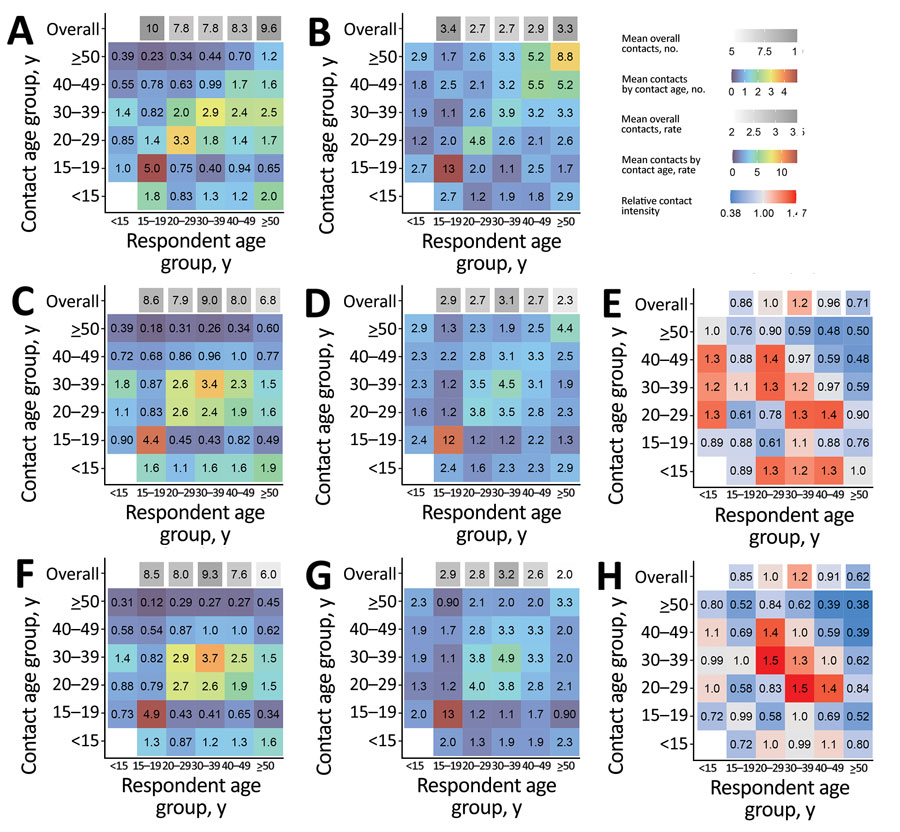Volume 28, Number 10—October 2022
Research
Improving Estimates of Social Contact Patterns for Airborne Transmission of Respiratory Pathogens
Figure 5

Figure 5. Age-mixing matrices relevant for droplet transmission (A,B), nonsaturating airborne transmission (C,D), and Mycobacterium tuberculosis transmission (F,G) for study of social contact patterns for airborne transmission of respiratory pathogens, Western Cape Province, South Africa. Panels A, C, and F show absolute contact intensities between respondents and contacts in each age group; panels B, D, and G show intensities of contact between each member of each age group; panels E and H show intensities for airborne infections and Mycobacterium tuberculosis compared with intensities for droplet infections, respectively. Numbers shown in panel A are the mean number of contacts respondents in each age group have with contacts in each age group per day. Numbers shown in panel B are the rate of contact between each person in the population per day, expressed as rates × 105. Numbers and rates in panels C, D, F, and G are standardized so that the mean overall contact intensity by reported by adult respondents is the same as the mean number of overall close contacts reported by adult respondents (panel A). Contact numbers between child respondents and contacts in each age group were estimated from data on contact between adult respondents and child contacts.